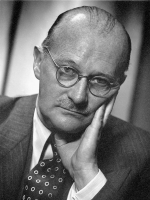
1928 Nobel Prize in Chemistry
Adolf Otto Reinhold (*1876 – †1959) received the Nobel Prize for his contribution to research into the structure of the sterols and their connections with the vitamins.
Adolf Windaus was born and raised in Berlin, where he also began his studies of medicine and chemistry, attending the lectures of 1902 Nobel laureate Emil Fischer. He then came to Freiburg to complete his doctorate (1899) under Heinrich Kiliani. His dissertation had to do with the cardiac poisons of digitalis plants, which turned out much later to have the structure of steroids. To earn his habilitation, Windaus began studying the structure of cholesterol, molecules found in large amounts in animal cells whose structure and biological function had remained a mystery despite numerous earlier attempts to explain them. Although he earned his habilitation in 1903, Windaus did not succeed in explaining the structure of cholesterol until 1932, having received ideal support from his colleague Heinrich Wieland.
From the beginning, Windaus was convinced that there is a connection between the concentration of cholesterol in the blood and atherosclerosis. In his later work, he played a role in the discovery of the hormone histamine, described the structure of the plant cell component ergosterol, and explained the structure and function of vitamin D, also a steroid. In cooperation with an industrial partner, he clarified the structure of vitamin B1.
After his years as a lecturer in Freiburg, Windaus spent several years in Innsbruck (1913–1915) before being appointed to the prestigious Otto Wallach Chair in Göttingen. In 1928 he was awarded the Nobel Prize in Chemistry for his research on the structure of steroids and their connection to the vitamins.
Windaus was critical of National Socialism and expressed his opinions on the topic quite openly. His illustrious career ended with his retirement in 1944.







